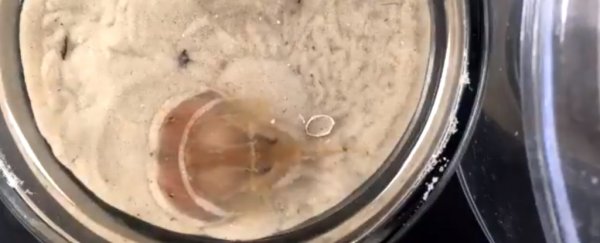Ever wondered how a growing horseshoe crab wriggles its way out of a shell that's grown too small? A new timelapse video lets you watch the fascinating process in action as a young horseshoe crab moults, leaving you wondering how it even fit into the shell it leaves behind.
In the wild, this process can take hours. The video - filmed by marine biologist Bailey Steinworth of the University of Florida - has been condensed down to just 16 seconds, so you can watch the little crustacean, just one or two years of age, wriggle out of its old skin.
Horseshoe crabs (family Limulidae) - and other arthropods - are protected by an exoskeleton of a long-chain polymer called chitin. As these creatures grow, the chitinous shell doesn't, so they have to shimmy their way out in order to get big and strong.
Horseshoe crabs don't reach adulthood - reproductive maturity - until they're around 9 or 10 years of age. They will moult around 18 times before reaching their adult width of up to 30 cm (12 in) across, and six of those moults will be in the first year of life, when the crab is growing very quickly.
The growth occurs stepwise. The horseshoe crab will emerge from its shell with a larger exoskeleton, growing to fill that new size until it is ready to moult again. And the bigger the horseshoe crab grows, the longer it takes to moult.
From the first split in the middle of its head to the larger creature crawling away from its shell can take up to 24 hours. You may have found the moults they leave behind on the beach, looking like the ghosts of horseshoe crabs. In a way, they are.
After it reaches adulthood, the crustacean won't moult again (as far as we know), living out the remainder of its up to 20-year lifespan at one fixed size.
The little one in this video has so much growing left to do!
